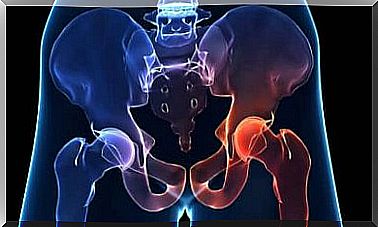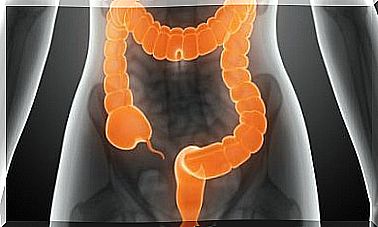Ticks – A Danger To Humans And Animals
As soon as you are sure that no part of the parasite has remained in the skin, you have to be careful when disposing of it that no eggs are left behind.

Ticks are parasites that belong to the mite family. You know for sure that they are dangerous as they can transmit disease to both humans and animals.
Ticks can seriously affect your pet. Tick-borne diseases can have serious consequences and even lead to the death of the animal if it is not treated in time.
The most common diseases include babesiosis and ehrlichiosis, which can cause chronic anemia.
These parasites prefer warm and humid zones, which is why they attach themselves between the legs, behind and in the ears and in the groin region of the four-legged friend in order to feed on their blood.
To keep ticks away, our pets should be bathed with special shampoos every week, it is best to get advice from the vet. The living space or place of residence of the animal should be disinfected every 15 days, whereby our four-legged friend should not be present.

Pay special attention to the amount and toxicity of the disinfectant so as not to harm your pet.
These unpleasant parasites can also transmit the following diseases to people:
Early summer meningoencephalitis (TBE)
Early summer meningoencephalitis is a viral disease of the central nervous system. The virus is primarily transmitted from ticks to animals or humans.
The symptoms begin similarly to summer flu: fever, headache and aching limbs, etc. However, as soon as the central nervous system is affected, meningitis or in severe cases encephalitis occurs.
As is well known, you can get vaccinated to protect yourself against this disease. Vaccination is especially recommended if you spend a lot of time outdoors.
The Robert Koch Institute publishes an updated map every spring in which the TBE risk areas in Germany are entered.
Colorado tick fever
Colorado tick fever is a viral disease that is transmitted by the Dermacentor tick. It occurs more frequently in Colorado, USA.
The symptoms are as follows:
- Nausea and vomiting
- Sweats
- Pain behind the eyes
- Photophobia
- fever
- General weakness
- Among other things, muscle pain
Lyme disease
Ticks that have previously stung mice and deer can transmit Lyme disease. Lyme disease can then affect our pets too.
This disease first appeared in Lyme (USA), hence the name, but it is also common in Europe.
In the initial phase of this disease, the infection has not yet spread to the whole body, which happens in the second phase, after which the whole organism is gradually completely attacked until the end phase.
In order to transmit this disease, the tick has to stick to the body for between 24 and 36 hours.
Symptoms of this condition are:
- Dejection
- fever
- muscle pain
- a headache
The ticks can be so small that it is sometimes difficult to spot them on the body.
Lyme disease can then be cured with antibiotics if diagnosed early .
In the third phase, i.e. in the final phase of the disease, swelling of the joints, cardiac rhythm and nervous system disorders can occur.
Rocky Mountains spotted fever
This bacterial disease is also transmitted by ticks, whereby the tick then has to stick to the body for more than 20 hours in order to transmit it.
This infection occurs primarily in North, Central, and South America.
Symptoms of Rocky Mountains spotted fever:
- fever
- a headache
- chills
- muscle pain
- confusion
The tick should be carefully pulled out of the skin by the doctor, after which antibiotic treatment is necessary to clear the infection.
Paralysis from a tick bite
A neurotoxin in the salivary gland of some ticks can then cause paralysis in children. Usually this is cured with the correct removal of the tick.
The child may have the following symptoms :
- Tingling sensation
- weakness
- Incoordination
- Unsteady walking
Tularemia due to ticks
This infection is caused by a tick bite, a bite from an infected rodent and contact with infected game meat.
Tularemia is common in North America, Europe, and Asia.
The symptoms are as follows:
- a headache
- fever
- chills
- muscle pain
- Weight loss
- Breathing difficulties, etc.
This infectious disease can be fatal in 5% of untreated cases.
The following complications can also occur: inflammation of the pericardium (pericarditis), inflammation of the bone marrow (osteomyelitis), meningitis or neonatal disease.
How can you remove a tick in the correct way?
In order to remove a tick from the skin, you should consider certain aspects:
You should grab the tick by the head or mouth with tweezers, then pulling gently but firmly.
You should be careful not to crush the tick, as blood and eggs can spread and become infected. It is also important that the head does not get caught on the skin.
Another way to remove the tick is to soak the area with alcohol, iodine or paraffin so that the tick comes off by itself.
Note the following …
- Use gloves or a paper towel.
- After removal, clean your hands and the affected area thoroughly with soap and water.
- If you then have trouble removing the head, see a doctor right away.
- Dispose of the tick in a closed container and then pay particular attention to possible symptoms of the diseases mentioned above.
prevention
- When walking in pastureland and wooded areas, you should wear long sleeves and trousers as possible.
- Wear closed shoes.
- Your clothes shouldn’t be very dark in color so that you can easily spot possible ticks on your clothes.
- Use bug spray on your clothes.
- Then tuck your shirt into your pants.
- Take care of your pets, check them regularly for possible ticks on their bodies.









